‘To this day, it is as attractive as when Hercules first laid eyes on it’: How to escape the crowds on the Amalfi Coast, according to those in the know
The Amalfi Coast is one of the world’s most famed holiday destinations, but, in recent years, mass tourism has made parts of it unbearable. Here’s our guide to making the most of it — in peace and in style.


The beauty of the Amalfi Coast is that if you look beyond its starlet appeal, you’ll find a mystical place shrouded in a thick cloak of beautifully romantic mythology. Legend says the name ‘Amalfi’ was born from the love story of the demigod Hercules and Amalfi — a nymph with eyes so blue, they mirrored the hues of the Tyrrhenian Sea.
Grief struck when Amalfi succumbed to death; it was said Hercules scoured the Earth to find the most beautiful place to bury her, and in a grove studded with lemon trees, the Amalfi Coast was born.
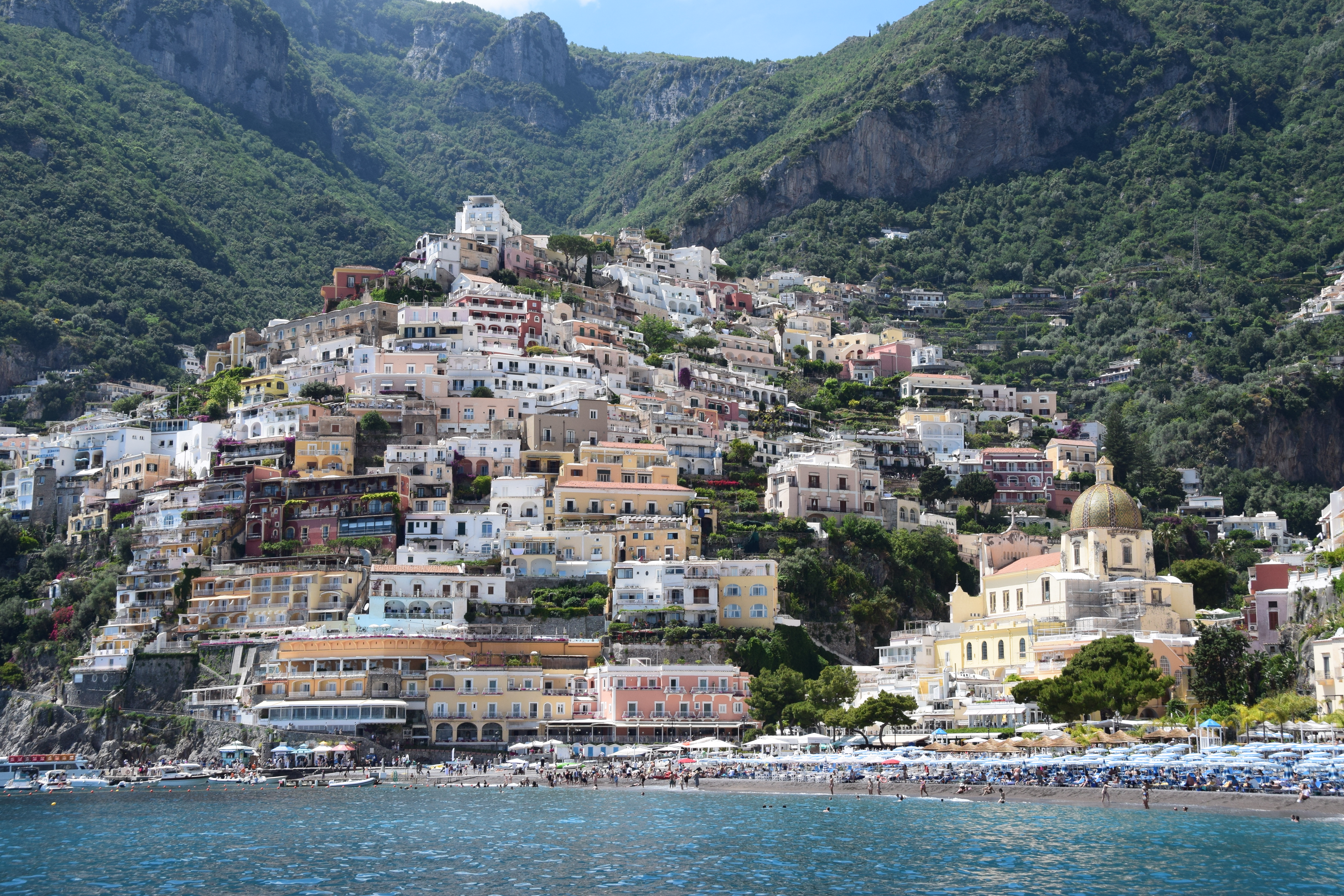
To this day, Costiera Amalfitana is as attractive as when Hercules first laid eyes on it. She is southern Italy’s ultimate headliner. From Capri all the way down to Vietri, Amalfi’s string of starry towns and hilltop villages conjure up the nostalgic mise-en-scène of la dolce vita: crystalline bays filled with private yachts, umbrella-flecked, volcanic ash beaches, and colourful villas clinging to sides of precipitous cliff faces.
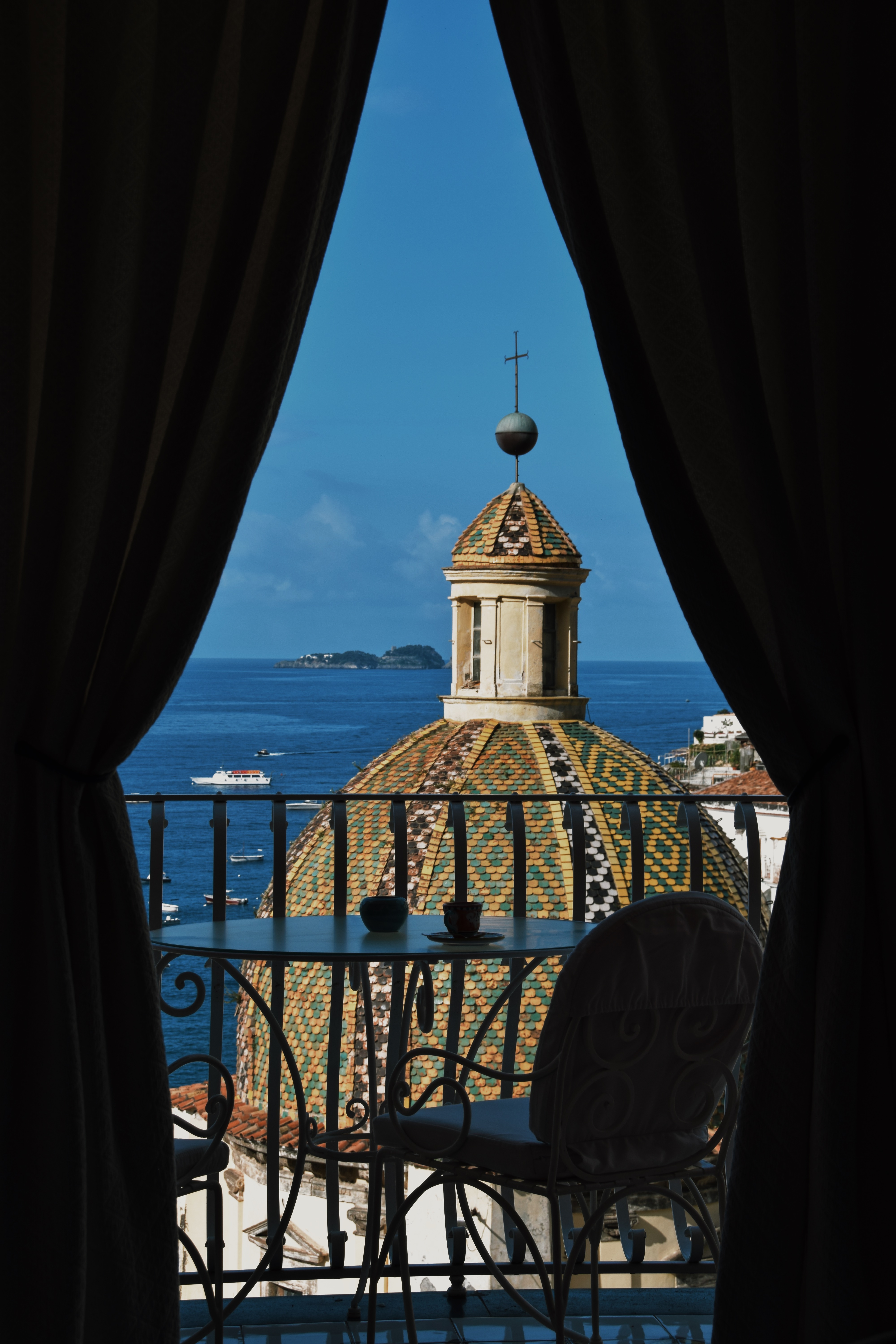
However, nowadays, as with everything else, there is a downside because the Amalfi is flirting dangerously with mass-tourism. Put simply, there are often too many people in too small a space. I have visited 12 times and am a self-prescribed Amalfi snob, and with each Grand Tour I’ve seen it gradually change from quiet(er) glitterati hotspot to… well, hell. The problem is that I still want to go, hence this handy guide, crafted by the people who know Amalfi the best. The locals. From where to stay, escape to and dine, here’s a vision of Amalfitana as poetic (and snobby) as Hercules always intended.
The best time to visit
It’s an age-old question that divides many. Over the years, the Amalfi Coast has become near unbearable to navigate in the peak summer months.
Hotel Santa Catrina’s general manager Andrew Camera says that ‘both spring and summer are the best’, but Amalfi native and Villa Treville’s marketing guru recommends off-season, if you’re happy to sacrifice some of the July and August glamour for fewer crowds. Her words are echoed by Treville’s general manager, Martino Acampora, who prefers September and October: ‘The crowds have thinned and the atmosphere is incredibly peaceful. It’s when locals truly get to enjoy their home again, and we love sharing that feeling with our guests.’
Attilia Avino, co-owner of Palazzo Avino, in Ravello, prefers late May to early June and mid-September: ‘The light is soft and golden, the atmosphere more relaxed, and the coastline reveals a more authentic character. This is when Ravello is at its most intimate, filled with the scent of lemon blossoms and a peaceful rhythm that feels truly local.’ For Aldo Sersale of Le Sirenuse, it’s May that takes the top spot because it’s when Nature ‘is lush and at its best’.
Exquisite houses, the beauty of Nature, and how to get the most from your life, straight to your inbox.
If you’re dead set on peak summer then adhere to the advice of all the coastline’s concierges and charter a yacht. Edmiston and Y.CO can provide the goods, itinerary included. If you’re just after a day charter, to briefly escape the crowds, then opt for Positano Boats Tours.
Where to stay
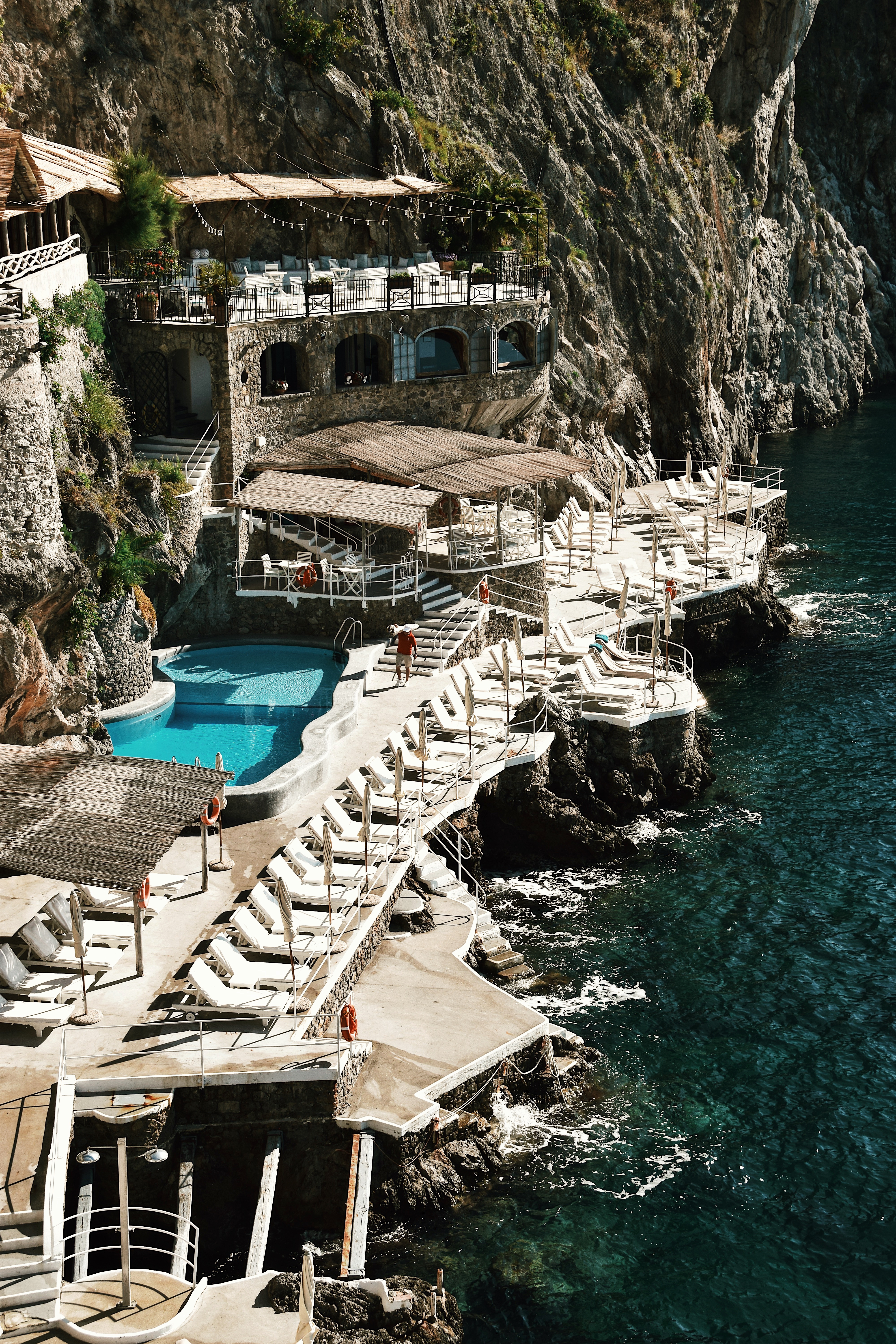
Hotel Santa Caterina, Amalfi
The original Amalfi Coast grand dame is as old school as they come: halls draped with long red roll outs and ornate Vietri tiles that offer a glimpse into a bygone era of Italian maximalism. It began life with just six rooms back in 1904, perched on a clifftop, a safe distance from the crowds. Its defining feature is its terraced, lemon grove gardens that tumble ever downwards to a pool and beach club.
The interiors jump from refrained to loud, highlighting some of Italy’s greatest tastemakers, including the Venetian glass-blowing island of Murano and the Gambardella family (they happen to own the hotel). Service is all waiters in tuxes and white gloves, but you can skip fine dining restaurant Glicine for the more capsule Al Mare. In short, Santa Caterina rests on traditional laurels and that’s why guests love it. It’s the Claridge’s of Campania.
Villa Treville, Positano
Villa Treville is often referred to as ‘the garden of the Amalfi Coast, for its towering Japanese maple trees and billowing wisteria plants. It means that the site, which spies on Positano, through the blooms, is immensely secluded. As its late owner, the film director Franco Zeffirelli, once said, the place is ‘a riot of Mediterranean vegetation, pines, flowers, trees, and cacti.’ Scurry along the stretch of craggy coastline Villa Treville calls home and there are more green surprises, from a veggie garden, to a grotto, complete with its own hot tub and a sea-view spa.
Tennessee Williams, Laurence Olivier, Liza Minnelli, Elizabeth Taylor and Richard Burton were all fans — hence the architectural odes to them across the property, the cinematic totems scattered across the communal spaces, plus suites named in their honour. Today it’s a magnet for the cultural elite who have a taste for its privacy and its Moorish-Arabic design. The best room? Aida, for total privacy with a view of and direct access to the sea.
Le Sirenuse, Positano
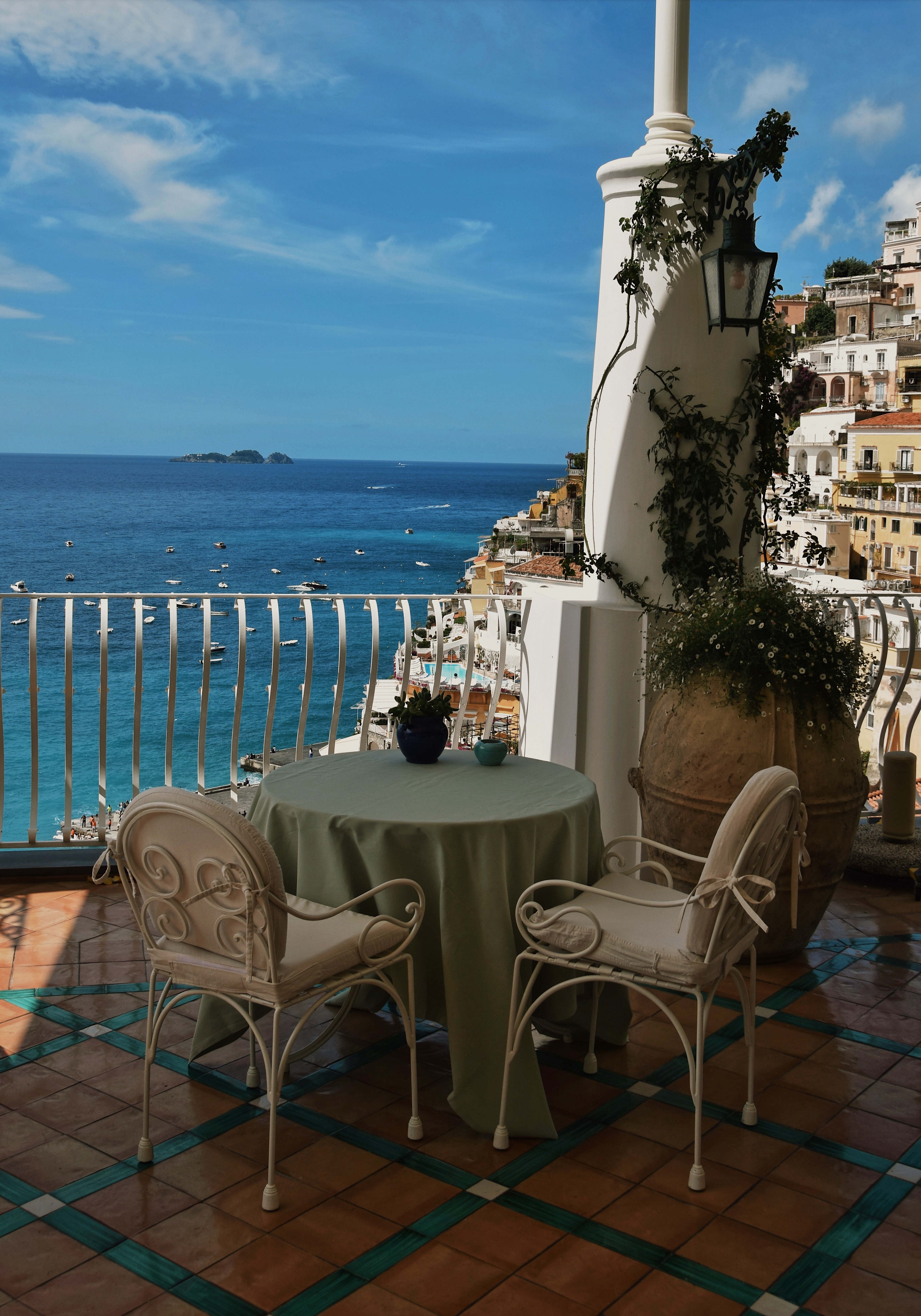
Le Sirenuse is a destination in its own right, the former summer home of the Sersale family, who still own it. Its familial roots are very much part of the charm. The ever- cool, calm and elegant Antonio and Carla run a tight ship, alongside sons Aldo and Francesco, who oversee everything from the hotel restaurant, La Sponda, to retail venture Emporio Sirenuse. Its storied past is an ode to the colours, textures and customs of Campania and chronicles generations of the House of Sersale with a medley of antiques, portraiture, curios, and period and contemporary art pieces.
Its special place in the pantheon of great hotels is thanks to its ‘relentless drive to innovate; a sense of constant newness on a nostalgic coastline.’
‘I have memories of sitting on my great-uncle Aldo's lap in the hotel lobby as a child, watching the world pass by,’ says Aldo. ‘It's where my family came together and where so many special moments were shared. We're passionate about curating every detail and constantly looking for ways to elevate the experience — not for the sake of change, but to keep the soul of Le Sirenuse evolving and alive.’
Palazzo Avino, Ravello
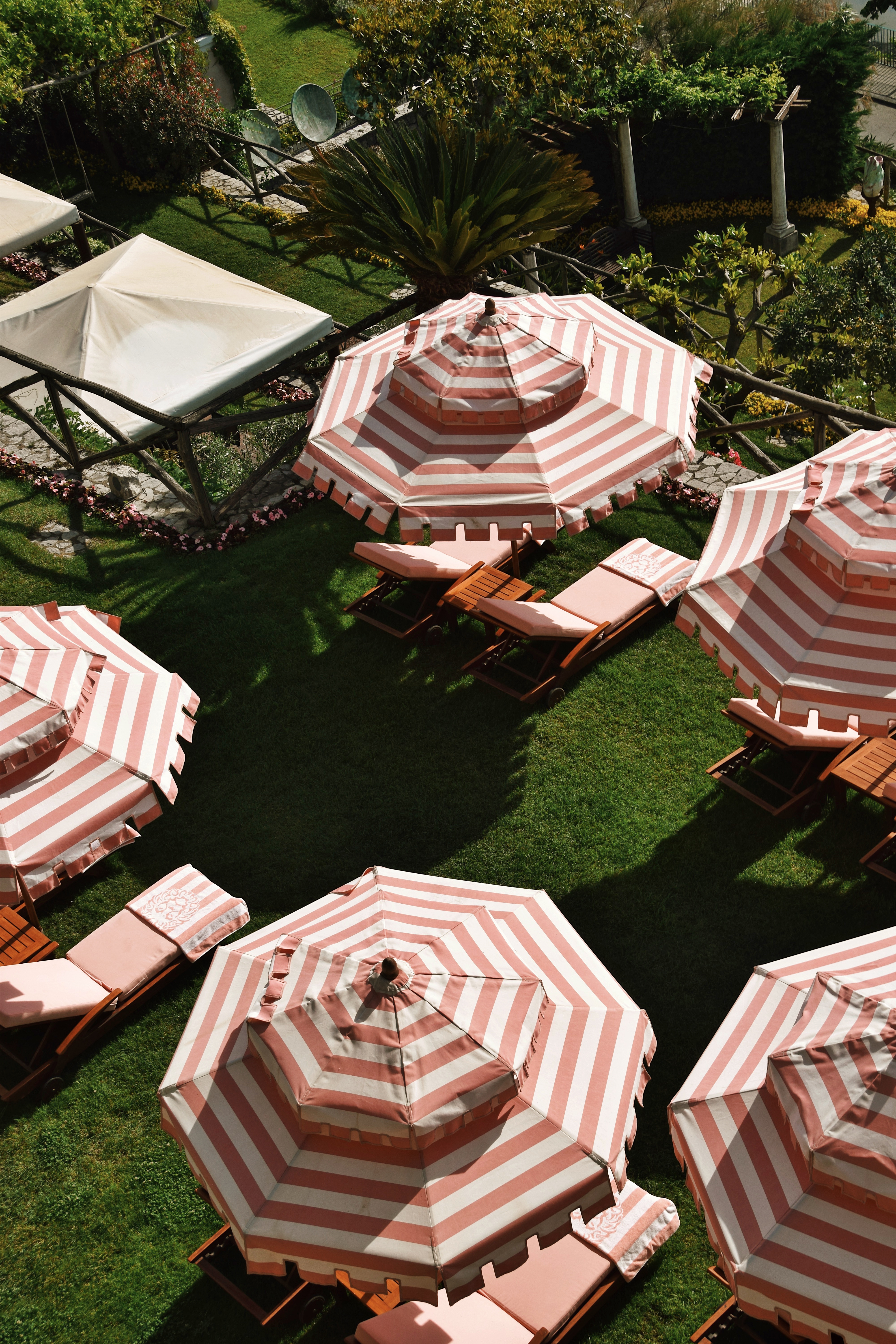
This is perhaps the most romantic hotel of its kind on the Amalfi Coast. It first opened in 1997 and is now in the hands of the original owner’s two daughters, sisters Mariella and Attilia, who quickly went about adding their signature pink and personalities to the place.
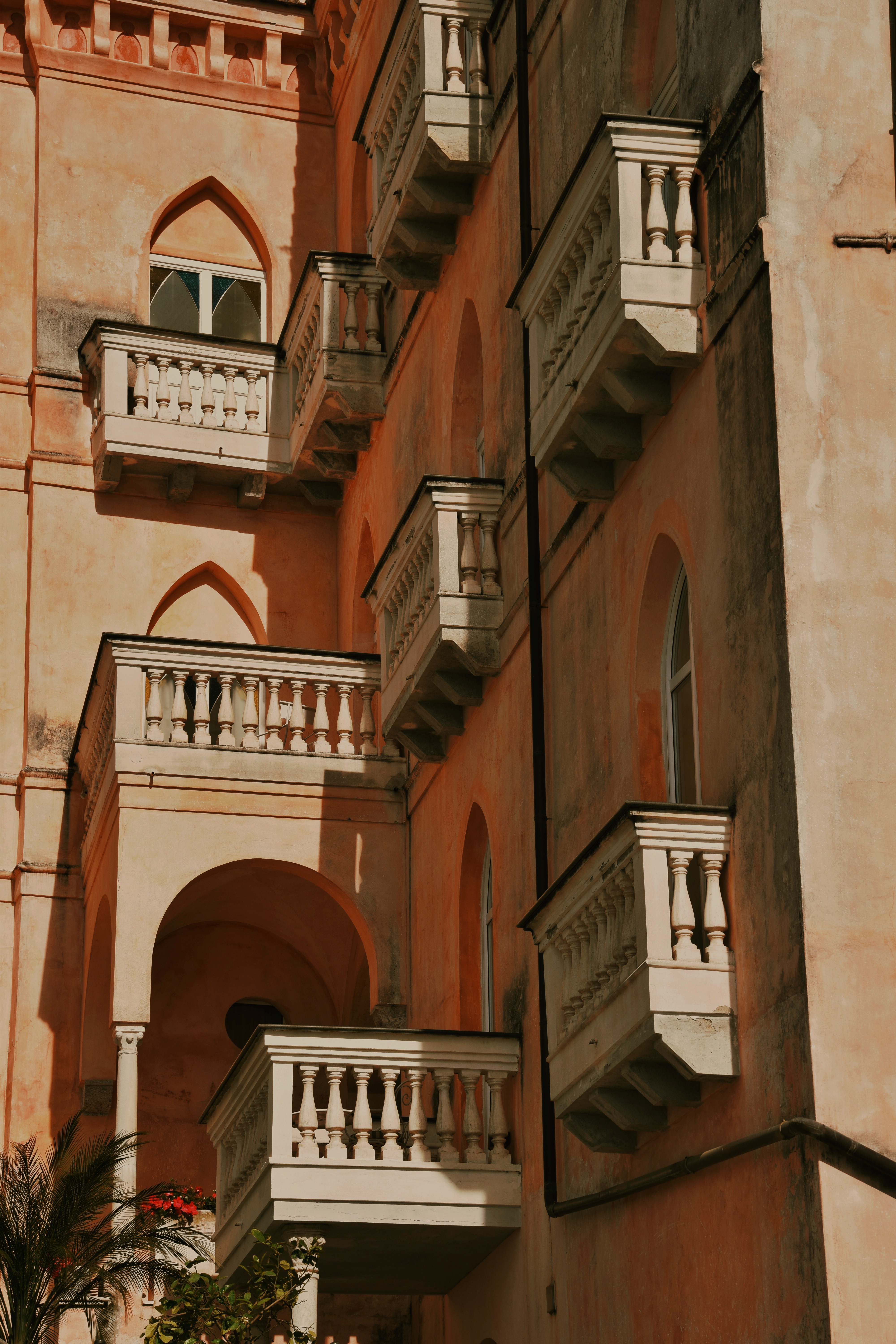
‘Our hotel is a testament to female entrepreneurship and a proud family legacy. As an all-female family-run property, we are deeply committed to offering an experience defined by passion and authenticity. Every detail tells a story, shaped by the vision and dedication of the women in my family, from my mother to my sisters and myself,’ says Attilia.
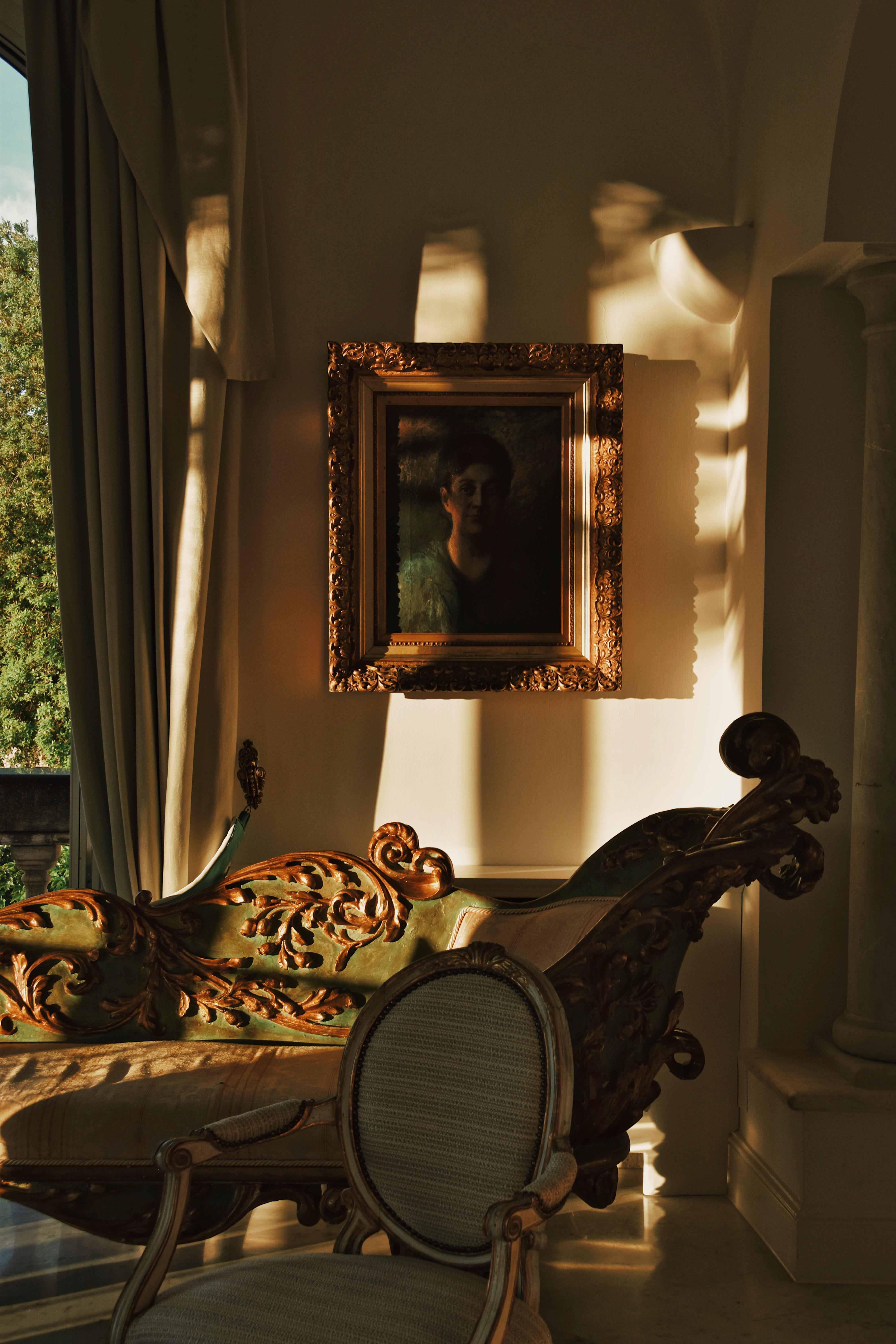
The female design gaze is present throughout. There’s the Pink Closet, a pink boutique paradise filled with Italian and European treasures, curated by Mariella, plus, a carousel of patterned Barbie-core umbrellas next to the swimming pool and at the private beach club, a short drive away. The achingly intimate terraces, where lunch and dinner are served, come with stellar views of the Gulf of Salerno; and rooms and suites don pink shell tiles, wavy mirrors and chic scalloped headboards.
Il San Pietro di Positano, Positano
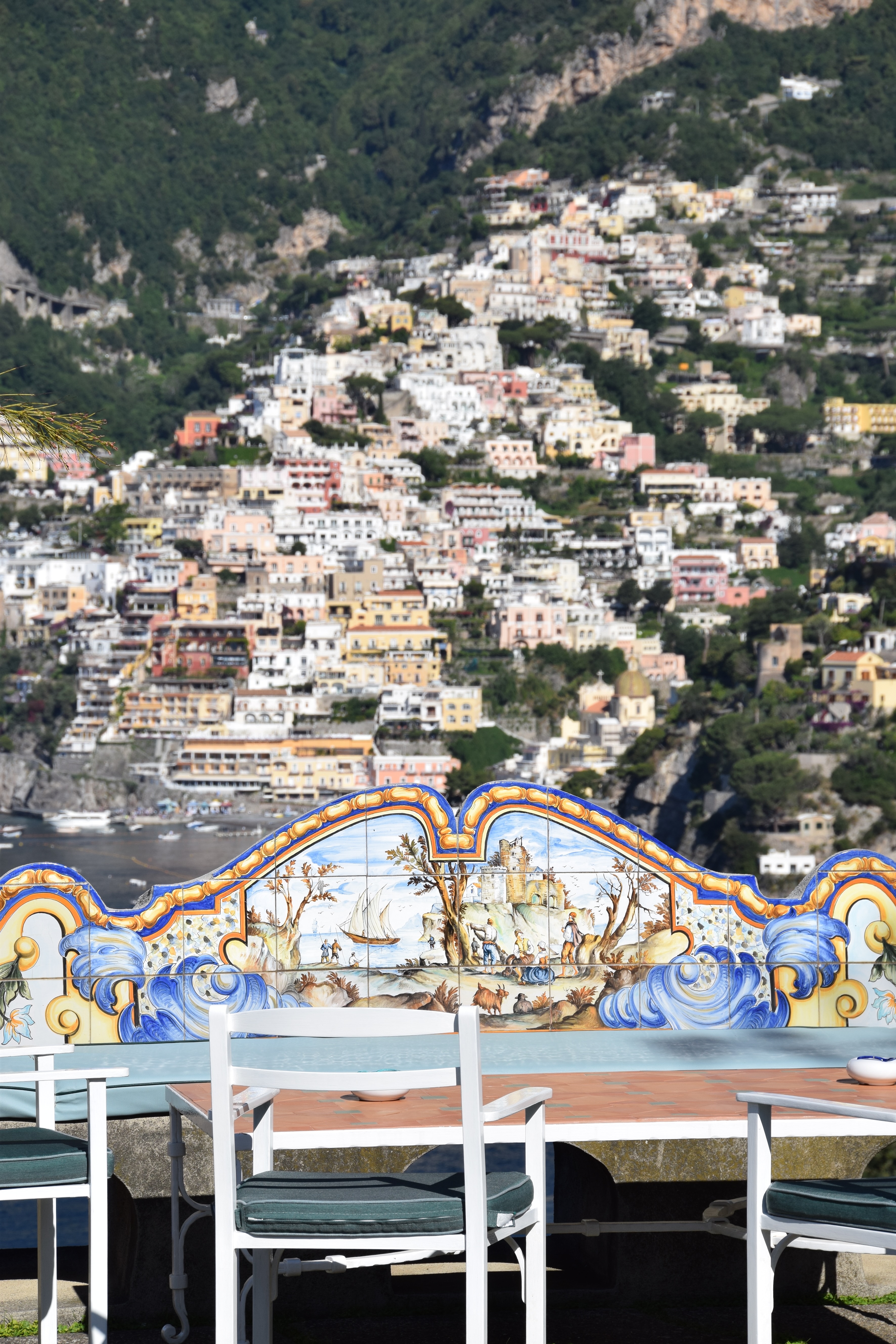
‘The success of this hotel is that we are not doing what everyone else is doing,’ says owner Vito Cinque. ‘Whenever there is a change, you notice it here. Everyone has their own interpretation of luxury. For me, it is not something that belongs to anything — it is just a sensation. It is about feeling. This place creates some form of emotion. It makes you feel good. I sometimes ask myself, “are we a hotel or a hospital?" Why? Because people tell me they come here to regenerate. They choose not to leave. Our longest serving employee was here for 52 years, and that says something. People are happy. And they almost leave with a new soul.’
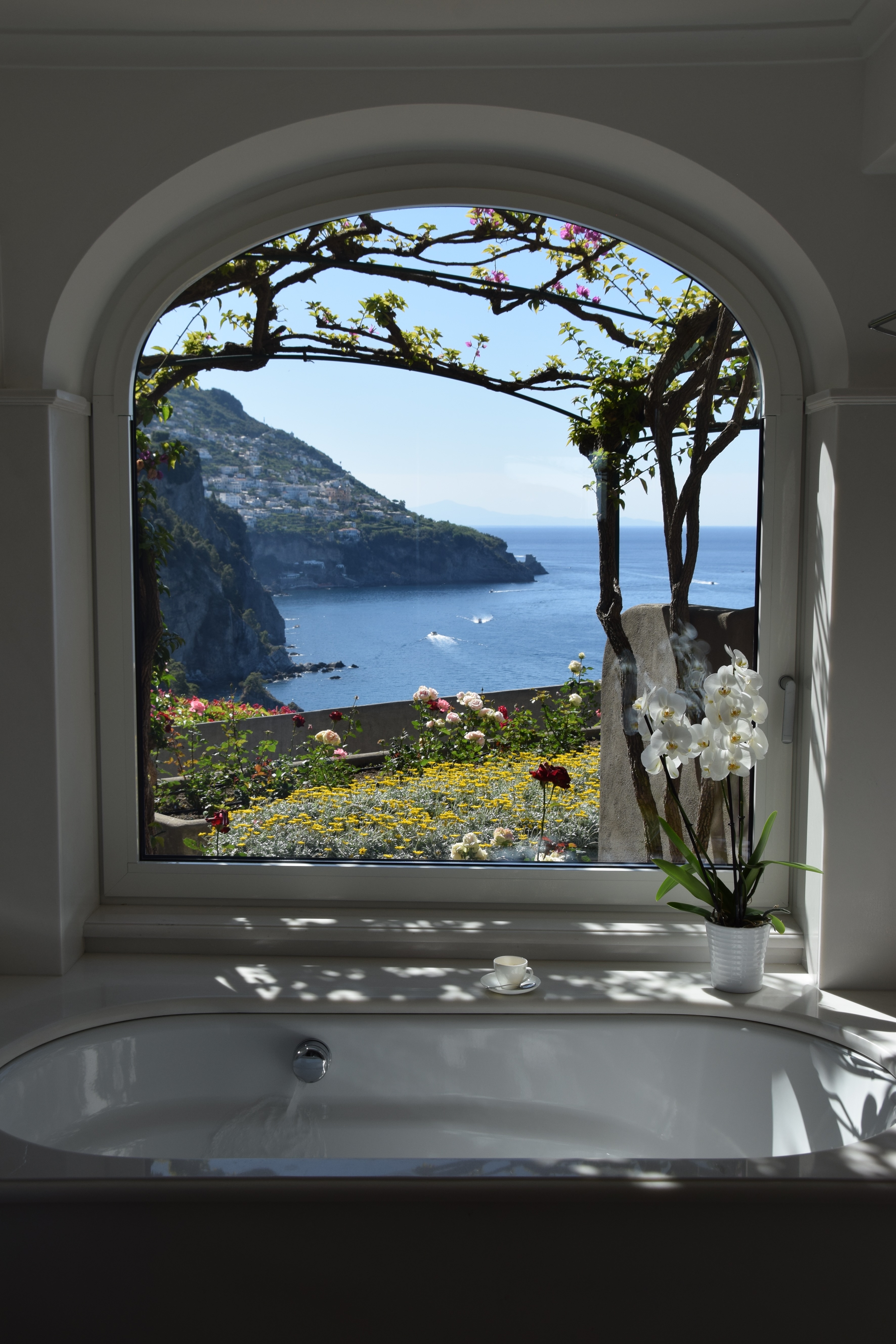
And San Pietro really does live up to its self-proclaimed reputation as one of the world’s best hotels. Step inside its guarded gates and a vision of heaven grips you: winding staircases consumed by bougainvillea, marble statues and a teardrop-shaped swimming pool. The rooms are, in general, huge, and there’s Zass, the hotel’s Michelin-starred restaurant which makes the most of local seafood and produce plucked directly from the hotel’s kitchen garden. The private beach, recently-opened boutique, tennis court and beach club are all worthy of a mention, too.
Casa Angelina, Praiano
Casa Angelina is marmite — you either love it or hate its sleek white lines. Old world types rarely set foot through its doors, but if you’re looking for something a bit different, cleaner, a world away from the yellow and blue tiles that best symbolise this corner of the world, then it might just be for you…
The attention to detail is unquestionable. You can choose your own amenities from a selection of international and Italian brands and, if you’re a fusspot like me, even your own pillows and mattress. The food is thoughtful, inventive and deliciously expensive (but worth it), and the breakfast spread is revered by competitor hoteliers.
Borgo SantAndrea, Amalfi
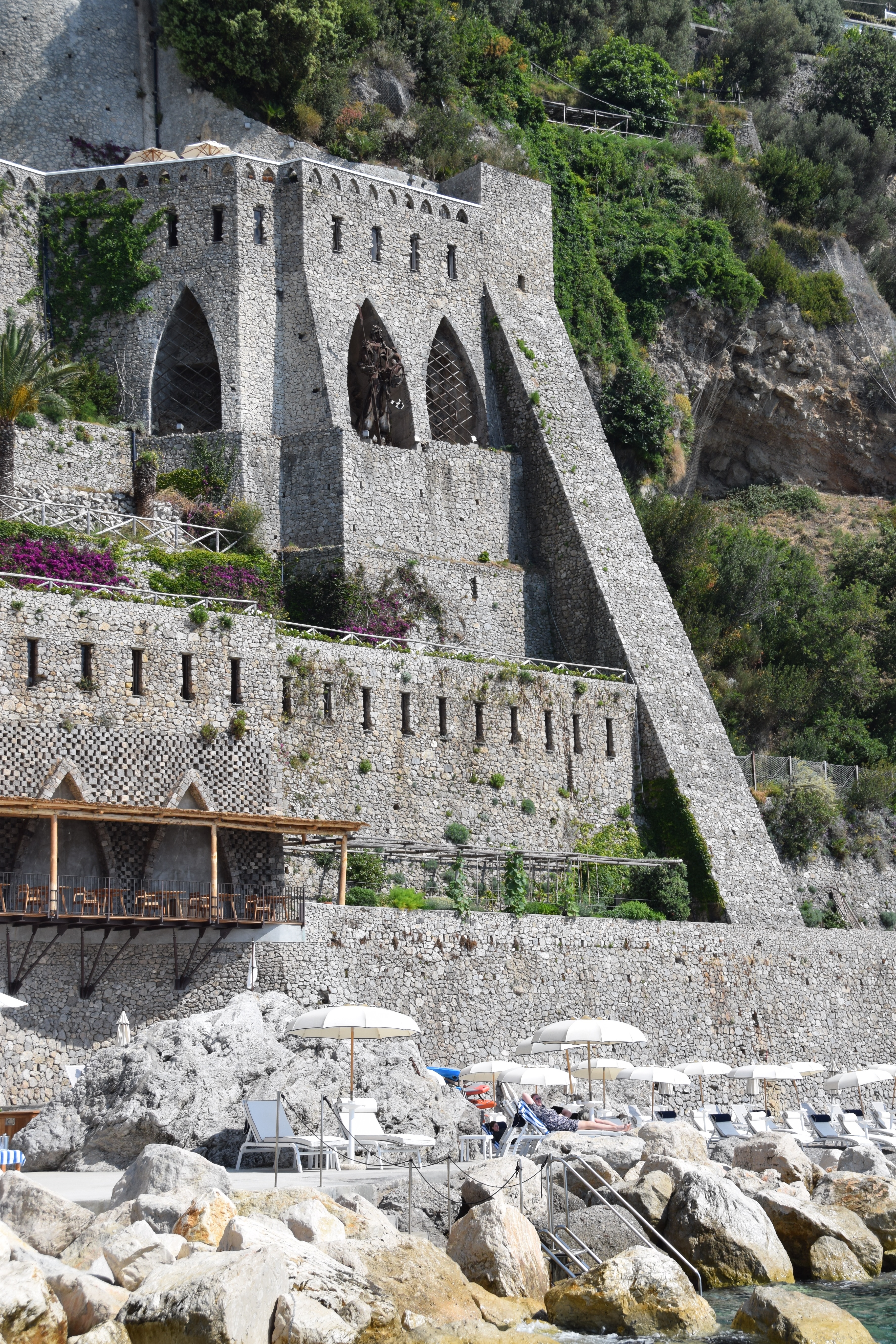
Borgo SantAndrea is the first, ‘new’ luxury opening on the Amalfi Coast in 15 years and its exclusive Marinella Beach Club is the only one of its kind (it’s not open to the public) that can lay claim to its own sweep of elusive sand.
The club’s restaurant exists inside a space hollowed out of a medieval arsenal, left over from a time when the then larger Amalfi was its own republic, and a boathouse. In fact, a pretty jasmine-covered garden gate, in the middle of the hotel’s steeply terraced gardens, was once the official gateway to the Duchy of Amalfi.
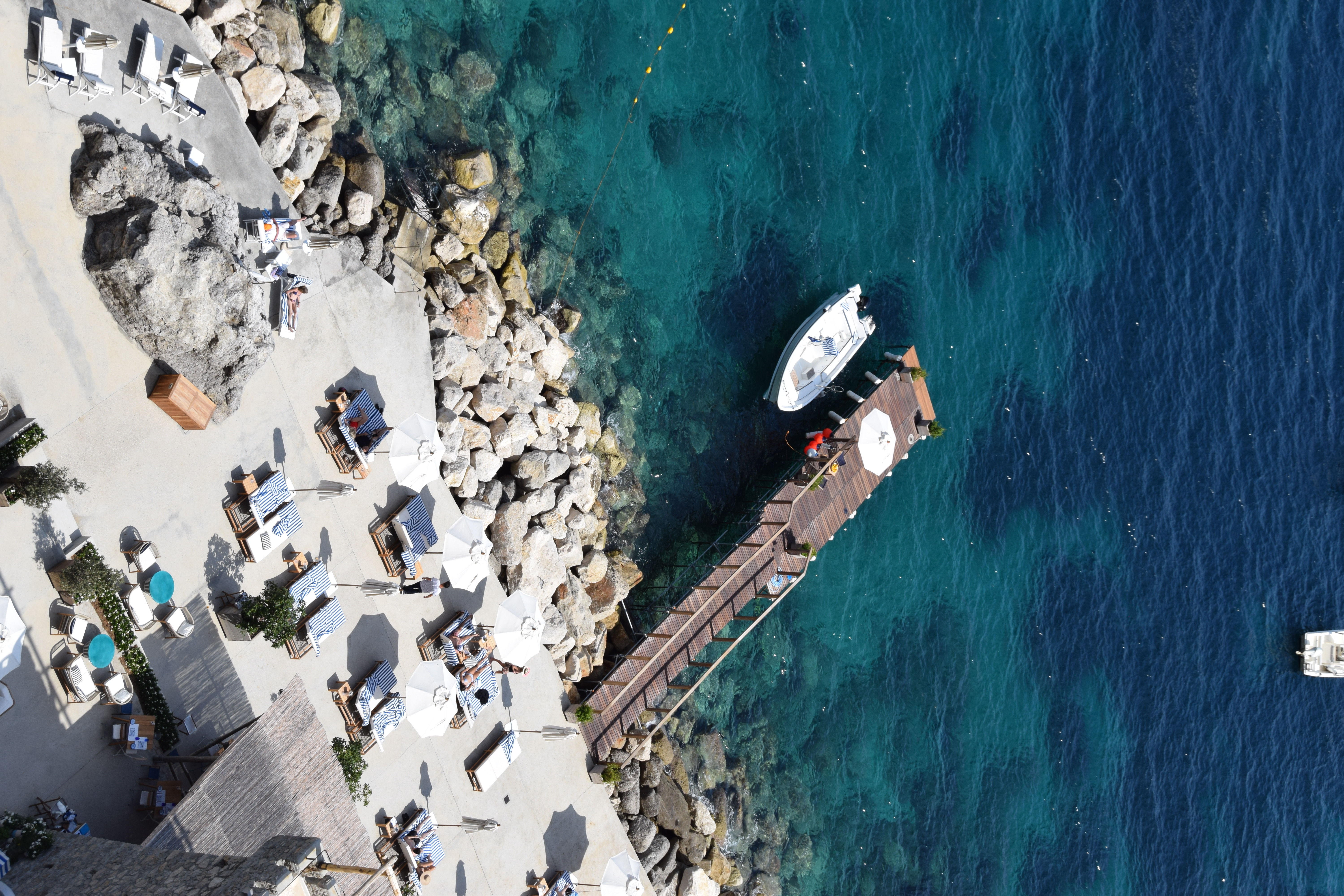
There’s also a temporary jetty, dismantled at the end of each summer season as if to signal the start of the coastline’s period of annual hibernation, a line of elegant clapboard beach huts and rows of sunbeds — some facing the jetty where, from time to time one of the hotel’s five boats slips its mooring and disappears off towards the hazy, pastel horizon; others on the beach, a few sandy steps away from sea the colour of glassy jade — each one shaded by a fluted parasol. You likely won’t find your-self dancing on a table come mid afternoon — there’s Pampelonne Beach in St Tropez for that — but the people-watching, the beach club-goer’s sport of choice, is unbeatable.
Inside, the hotel is a love letter to local artisanship (there are 31 different types of painted tiles) and breakfast buffet is so monumental that, on your first day, a member of staff will offer you a guided tour of it.
Where to eat
Gennaro Russo, the chef at Le Sirenuse, recommends Ristorante Lido Azzurro in Amalfi, Villa Gabrisa in Positano and Torre Normanna in Maiori (it’s set inside a medieval tower). ‘It’s [Torre Normanna] run by the Proto brothers, true gentlemen who make you feel welcomed and at ease, serving local products prepared with great care. It is a one-of-a-kind experience.’
Alfredo Rabbusco, Il San Pietro’s head concierge, and the Avino sisters both praise Da Lorenzo in Scala — one of the best, unknown restaurants. The homemade pasts is a particular highlight.
Agata Cioffi, the concierge at Le Sirenuse, always recommends Positano hotspot Da Vincenzo for its ‘well-executed Mediterranean cuisine’, as well as beach club La Scogliera for its ‘stellar aperitivo hour’ and ‘exclusive, elegant and private ambience.’
Members of the Villa Treville and Il San Pietro di Positano teams love La Tagliata, a seaside restaurant; Zana, general manager of the latter also highly recommends a a visit to Saghir Ristorante Wine Bar in Praiano. ‘You go here to see owner Piccoleto in action. He cooks and serves you at the table and is a bit of a showman. He makes the best potatoes and pasta ever, and after dinner there's loud music and he often dances with customers.’
Where to eat (even if it’s just once)
Da Adolfo, Positano
You’ve surely seen pictures of Da Adolfo restaurant and beach club in coffee table tomes and Instagram? Carla Sersale once branded it ‘the best restaurant in the world’. Owner Sergio is to the point, but serves his food with grace and a dose of good humour. Try everything from the zuppa di cozze, to mozzarella on lemon leaves.
La Taverna del Leone
This gem of a local spot began life as a family-run pizzeria, back in 1965. It’s a favourite of Annarita Aprea, the director of sales and marketing, at Casa Angelina, and a Sorrento native. ‘It is my go-to haven for a true taste of the Amalfi Coast. What I love most is the honest, unfussy approach to cooking — every dish feels like it was made at home, yet feels elevated thanks to the exceptional quality of the local produce. There’s no manipulation or pretension here, just a deep respect for ingredients and heritage.’
Ristorante Belvedere at Hotel Caruso, a Belmond hotel
The fine dining option here from chef Armando Aristarco is simply ‘top notch’, say seasoned travellers and guests, Sara Santini and Andrea Di Filippo. Both recommend ‘the traditional tasting menu’ for ‘its creative flair and reflection of true Campanian flavours’, from refined versions of eggplant parmigiana to tuna ventresca.
La Gavitella
Go for the ridiculously tasty seabass-stuffed fishcakes, stay for the beachclub’s ‘throw your feet up in the air and laze’ mantra. It sums up everything that owner Salvatore remembers about growing up on the Amalfi Coast: ‘Everything was simple and joyful. Long summer days were spent diving into the sea, and I can still recall the sweet taste of the melting gelato under the sun, and the laughter on the beach as I ran barefoot on the sand. That feeling, for me, is the true essence of the Amalfi Coast.’
What to do
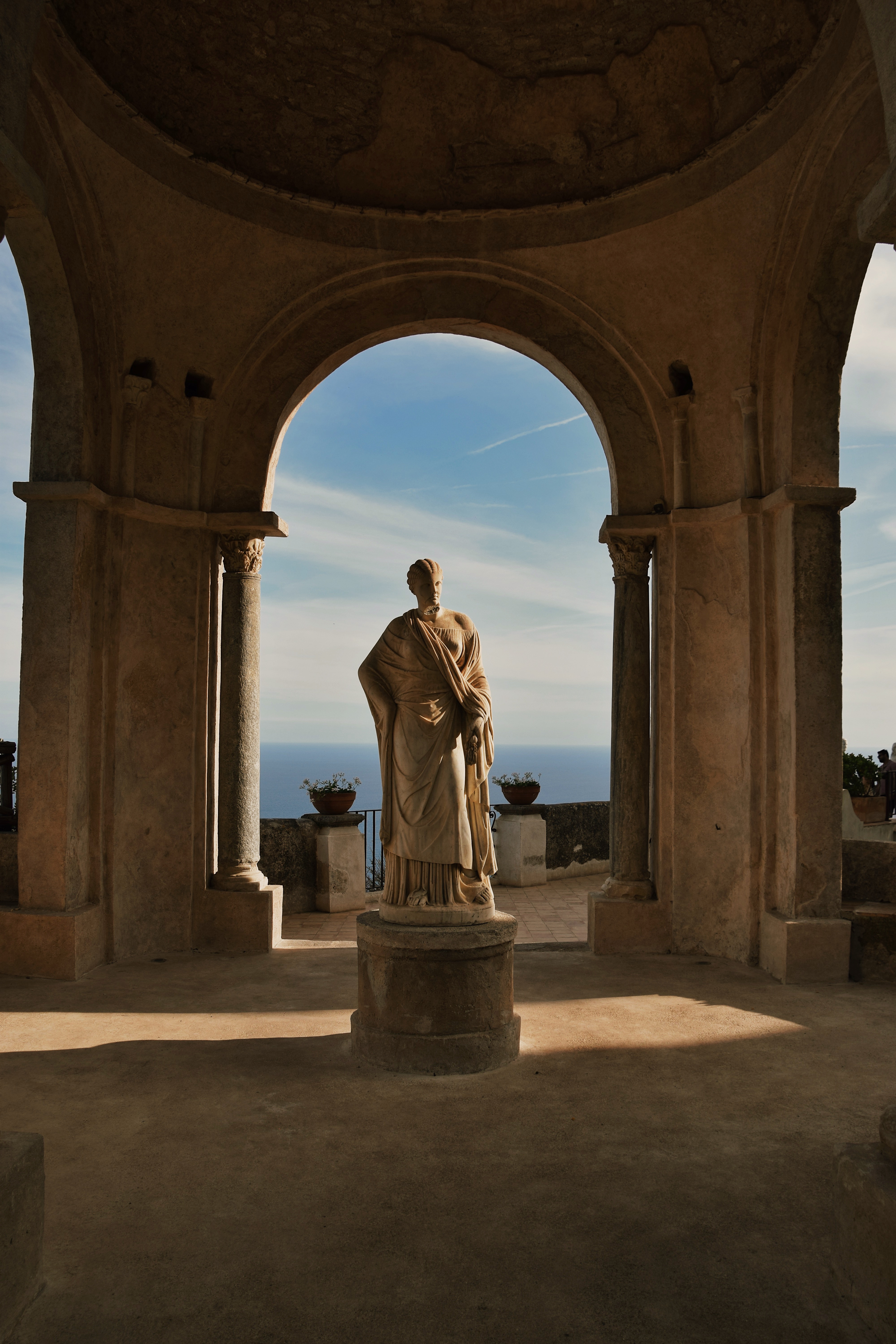
The breathtaking Terrace of Infinity in Villa Cimbrone, Ravello.
Hilltop towns and fishing villages
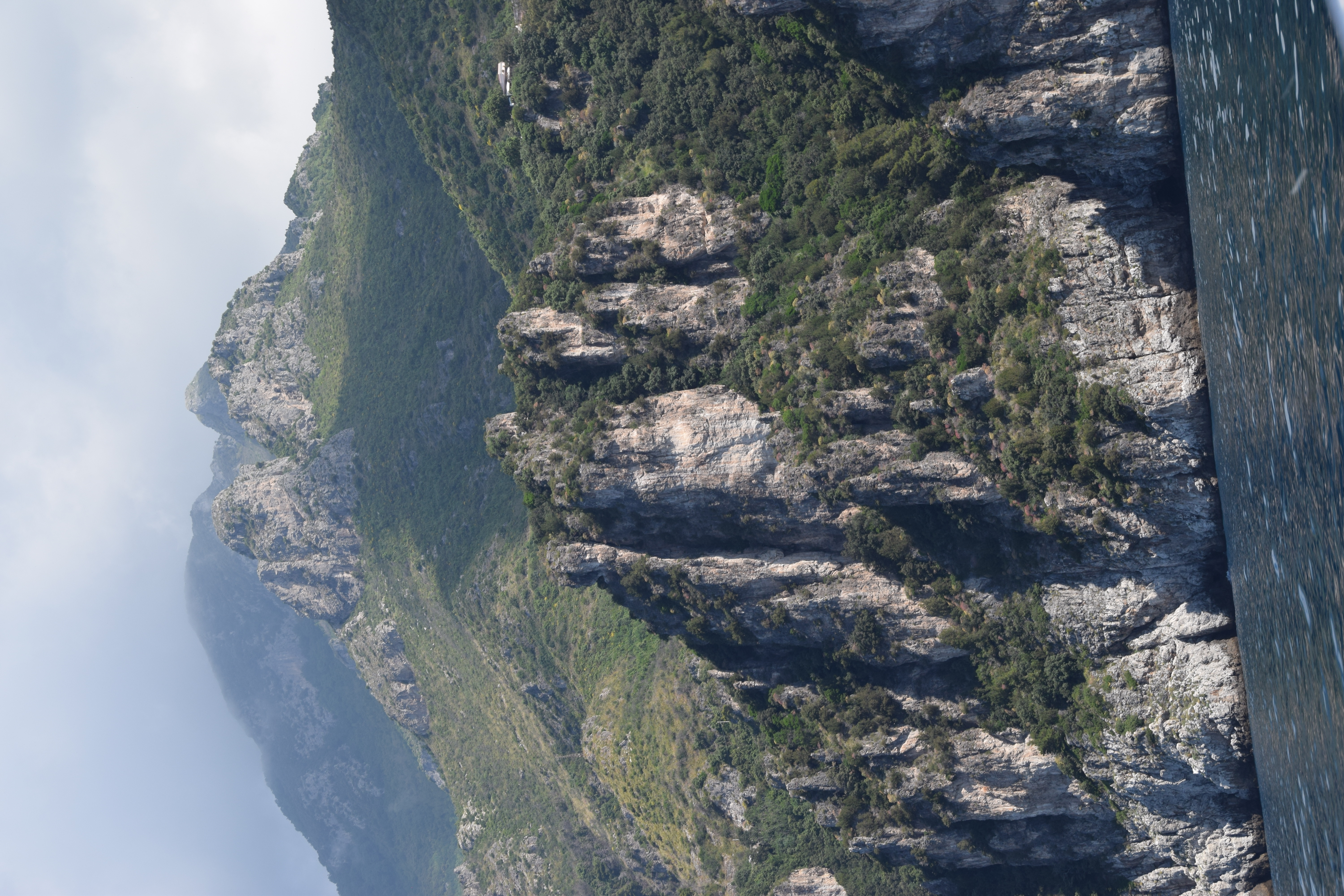
It might not feel like it when you’re there, but there is a world beyond Positano and Amalfi and it’s all worth exploring.
Founded in the 4th century, hilltop Scala is the oldest town on the Amalfi Coast — and is one of its least visited. Rino Mansi, the founder of Scala and Trekking, was born in Scala and has taken it upon himself to promote his hometown. Its main allure, he says, is that it’s ‘far from all the noise and traffic you find elsewhere on the coast.’ Plus, it is a place ‘rich in medieval, Norman and Arab history’ and beyond its dazzling views and cobbled lanes, it ‘gives you a chance to experience what life on the coast was like before the coast became such a huge destination.’ The Basilica of Sant'Eustachio and a walk along the trails that lead to The Ferriere Valley’ are on his personal highlights list.
Cioffi suggests a visit to Vietri to admire its ‘artisanal ceramics, colour and tradition’, along with Minori and Maiori which boast ‘ancient, terraced lemon groves, local farming traditions and the widest beach on the coast.’ Attilia Avino raves about Praiano: ‘It offers a slower pace of life, golden sunsets, and secret spots like the cliffside Africana grotto or the scenic path to Fiordo di Furore.’ Aldo Sersale goes to Monte Comune to escape. ‘I take a trail called Le Tese, which winds up to the small village of Santa Maria del Castello. From there, the path leads to Monte Comune, where the views are absolutely breathtaking: Capri, Positano, Mount Vesuvius, Sorrento, and Naples all stretch out around you. I bring a packed lunch and just enjoy the dreamy nature and landscape. It’s also a great workout.’
The fishing village of Cetara is often overlooked by international visitors and is a favourite of Aldo Sersale and Borgo SantAndrea’s general manager, Maurizio Orlacchio, who says its ‘charm lies in its simplicity’. It's best known for Colatura di Alici — an anchovy extract often considered the ancestor of Worcestershire sauce. Aldo tends to stop there for plates of spaghetti at Acqua Pazza.
The Path of the Gods
If you set out on this famous trail, to follow in the footsteps of Zeus and his clan, the Villa Treville team can arrange a meeting with Antonio, a shepherd, who will ‘host you in a very humble brick home in the mountains’ and feed you ‘vegetables from his garden and fresh cheese, and cut meats from the mountain town of Agerola.’ He’s even been known to play his guitar. The best time to visit, they say, is breakfast time, when it’s not too hot and the ‘sky is still golden’.
Cruise the coast to avoid the crowds
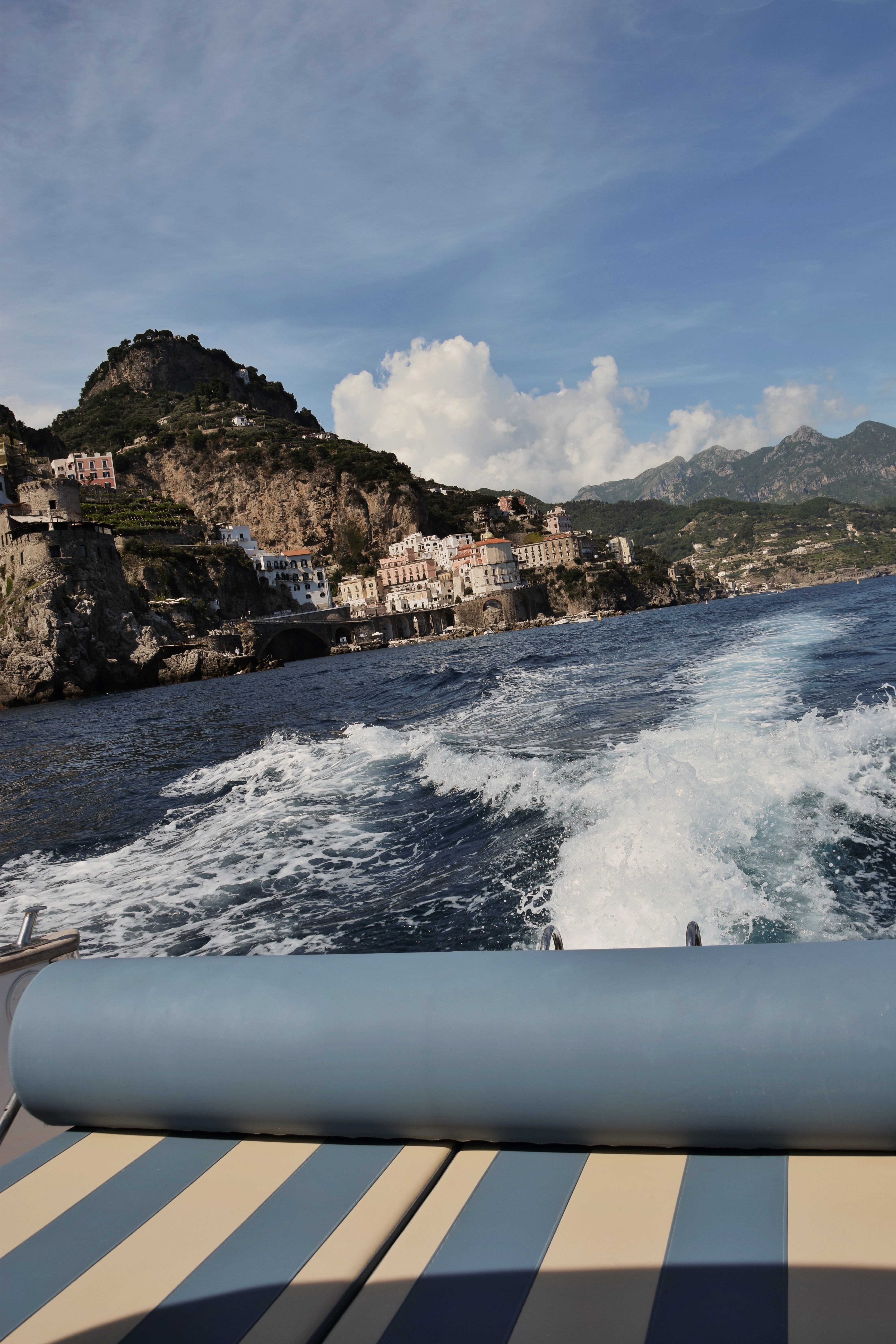
If you have ever visited the coast between late June and August, you will be familiar with the long, snaking queues of traffic. Owner of beachside restaurant La Gavitella, in Praiano, Salvatore De Lucia, advises boarding a boat. 'I always jump on a private boat to escape the crowds. It’s how you experience the Amalfi Coast in peace... away from the chaos. You are free to explore all its hidden coves and enjoy the sea in total relaxation.' Go totally bespoke with Positano Boat tours.
Go incognito in Ischia
It’s not the easiest island to get to, but Orlacchio, who hails from Ischia, a small volcanic island close to better-known Capri, offers entirely bespoke tours that are well worth the effort. ‘Ischia is the true hidden gem of Campania, and where you go for the most authentic Italian experience,’ he says. ‘It offers a rare and powerful combination: majestic mountains that embrace the coastline, pristine sea, and natural thermal waters that have attracted visitors for centuries.’
How to get there
There are daily flights from all major London airports to Naples. Private jets tend to land in Salerno, and all the hotels featured offer private land, air and sea transfers from major ports, airports and train stations.
Luke Abrahams is a freelance journalist based in London. He specialises in luxury lifestyle journalism, with an emphasis on sustainability, spirituality, culture and history. His work has appeared in 50 global titles across several markets, including British Vogue, Harper's Bazaar, The Times, Condé Nast Traveller, Wallpaper*, ELLE, Town & Country, The Telegraph, Travel + Leisure and House & Garden. He has visited 120 countries and, along the way, has learned the beautiful art of perspective. Italy will always hold a special place in his heart. When Luke is not writing, he often spends most of his time enjoying long walks or long baths.
-
 A country home that comes with a perfect lifestyle business: one of Britain's oldest vineyards
A country home that comes with a perfect lifestyle business: one of Britain's oldest vineyardsAstley Vineyard in Worcestershire, and the lovely house that it comes with, are looking for a new owner.
-
 Making space in a Georgian terraced Chelsea cottage
Making space in a Georgian terraced Chelsea cottageGuy Goodfellow removed an internal wall to transform the sitting room of this Georgian terrace
-
 Ardbeg House review: Concept design is a tricky business, but this Scottish whisky distillery-turned-hotel proves that it can be done to great effect
Ardbeg House review: Concept design is a tricky business, but this Scottish whisky distillery-turned-hotel proves that it can be done to great effectSteven King checks in to Ardbeg House, a boutique hotel from the LVMH behemoth.
-
 'The night smells like engine oil… and money': Singapore’s glittering night race paved the way for a new era of city-centre Grands Prix
'The night smells like engine oil… and money': Singapore’s glittering night race paved the way for a new era of city-centre Grands PrixIt's the Las Vegas Grand Prix this weekend, but it and other city-centre Grand Prix would be nothing without trailblazing Singapore. Natasha Bird explains how the city state got it so right.
-
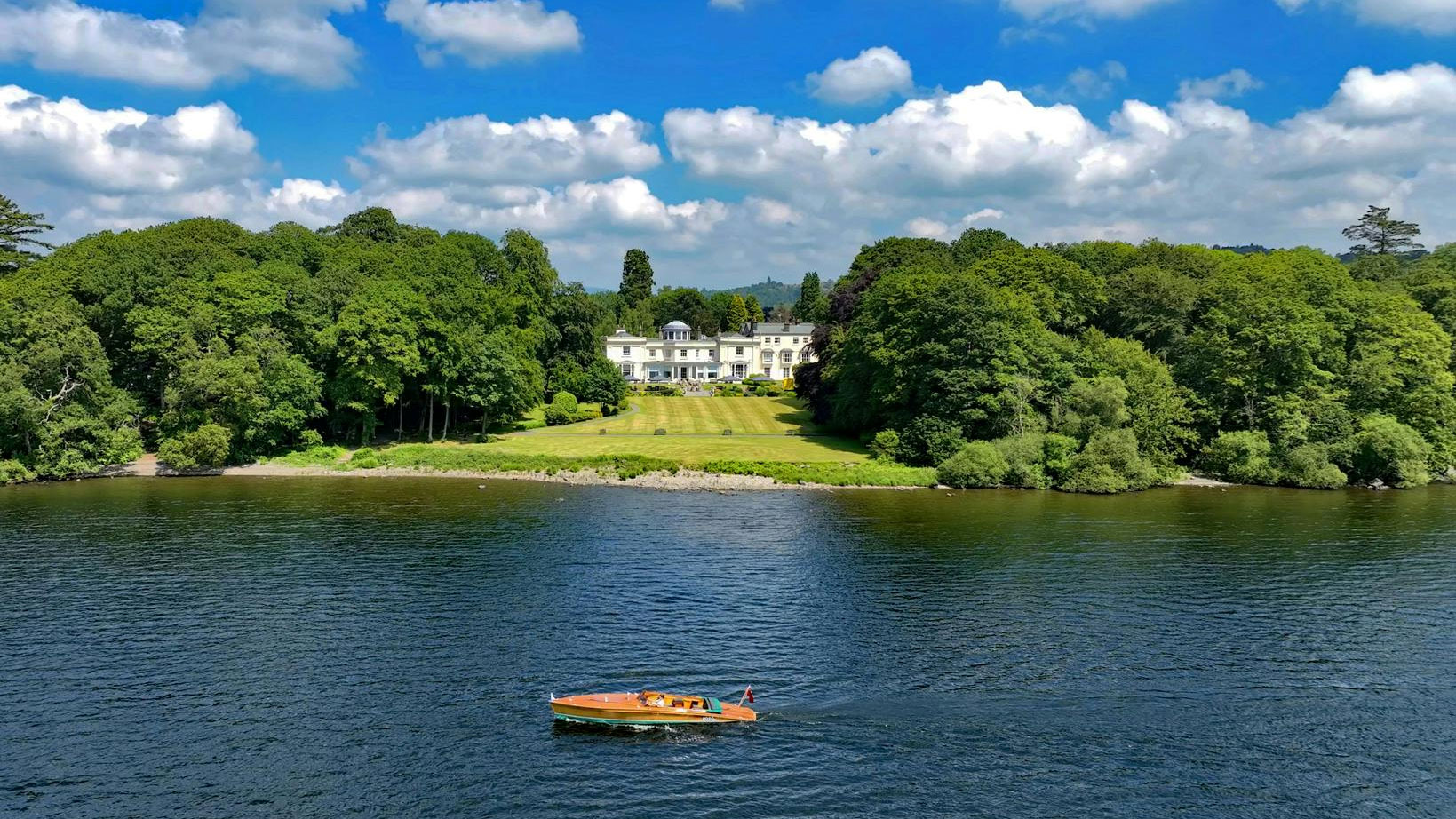 Storrs Hall: A glimpse of what a trip to Lake Windermere ought to be
Storrs Hall: A glimpse of what a trip to Lake Windermere ought to beLake Windermere — the largest stretch of water in the Lake District — is a tourist mecca that can often feel crowded, but head to places like Storrs Hall and you can still find the beauty and seclusion that first drew people here. Toby Keel takes a look.
-
 ‘For several days between Christmas and New Year, the departures lounge at Heathrow Terminal 5 becomes busier than Daylesford HQ’: A snob’s guide to winter sun
‘For several days between Christmas and New Year, the departures lounge at Heathrow Terminal 5 becomes busier than Daylesford HQ’: A snob’s guide to winter sunAnyone in their right mind abandons ship after Christmas for some winter sun, says Sophia Money-Coutts
-
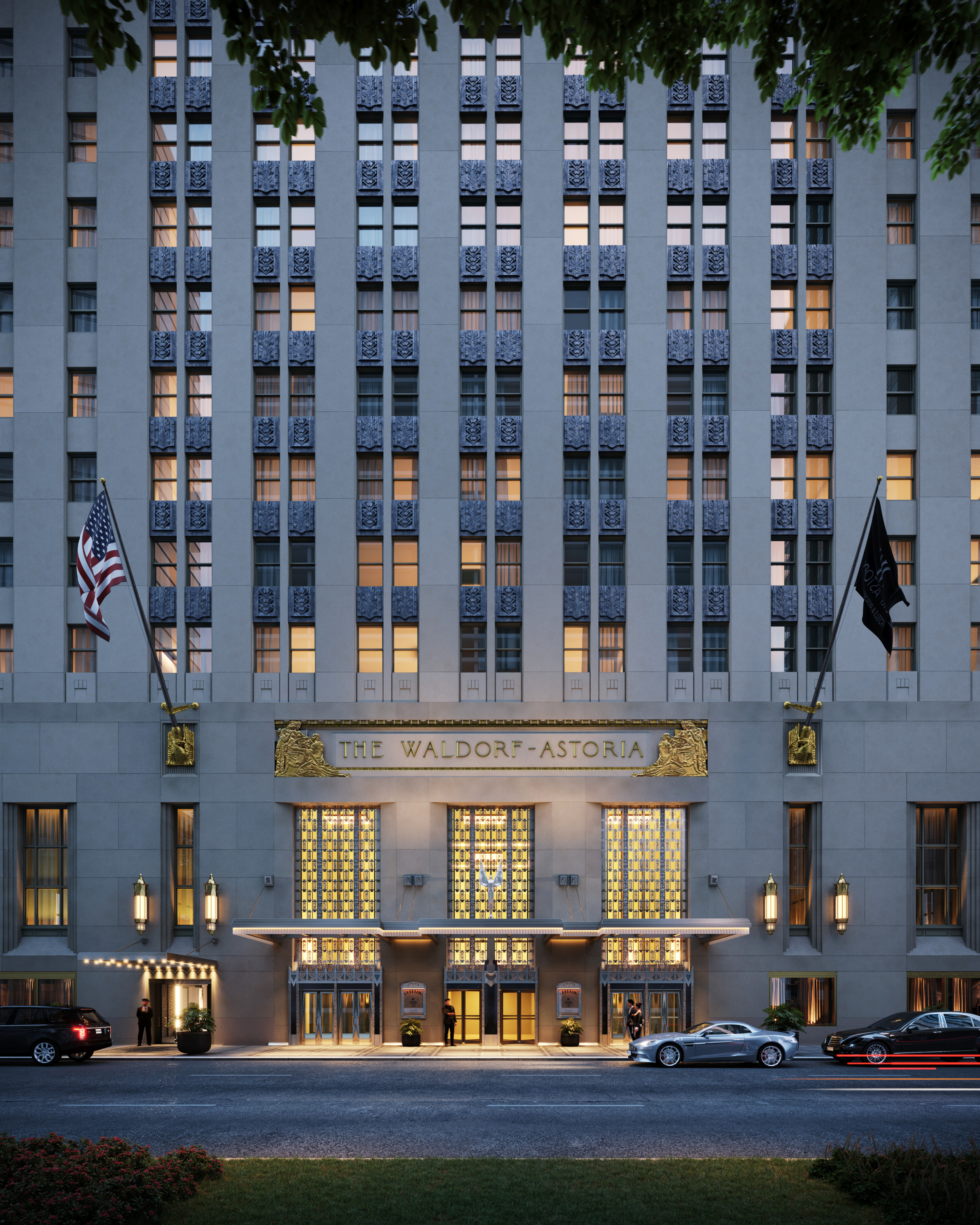 Waldorf Astoria New York review: The Midtown hotel where Frank Sinatra once partied and the salad of the same name was invented emerges from a decade-long renovation
Waldorf Astoria New York review: The Midtown hotel where Frank Sinatra once partied and the salad of the same name was invented emerges from a decade-long renovationOwen Holmes checks into the Waldorf Astoria New York hotel.
-
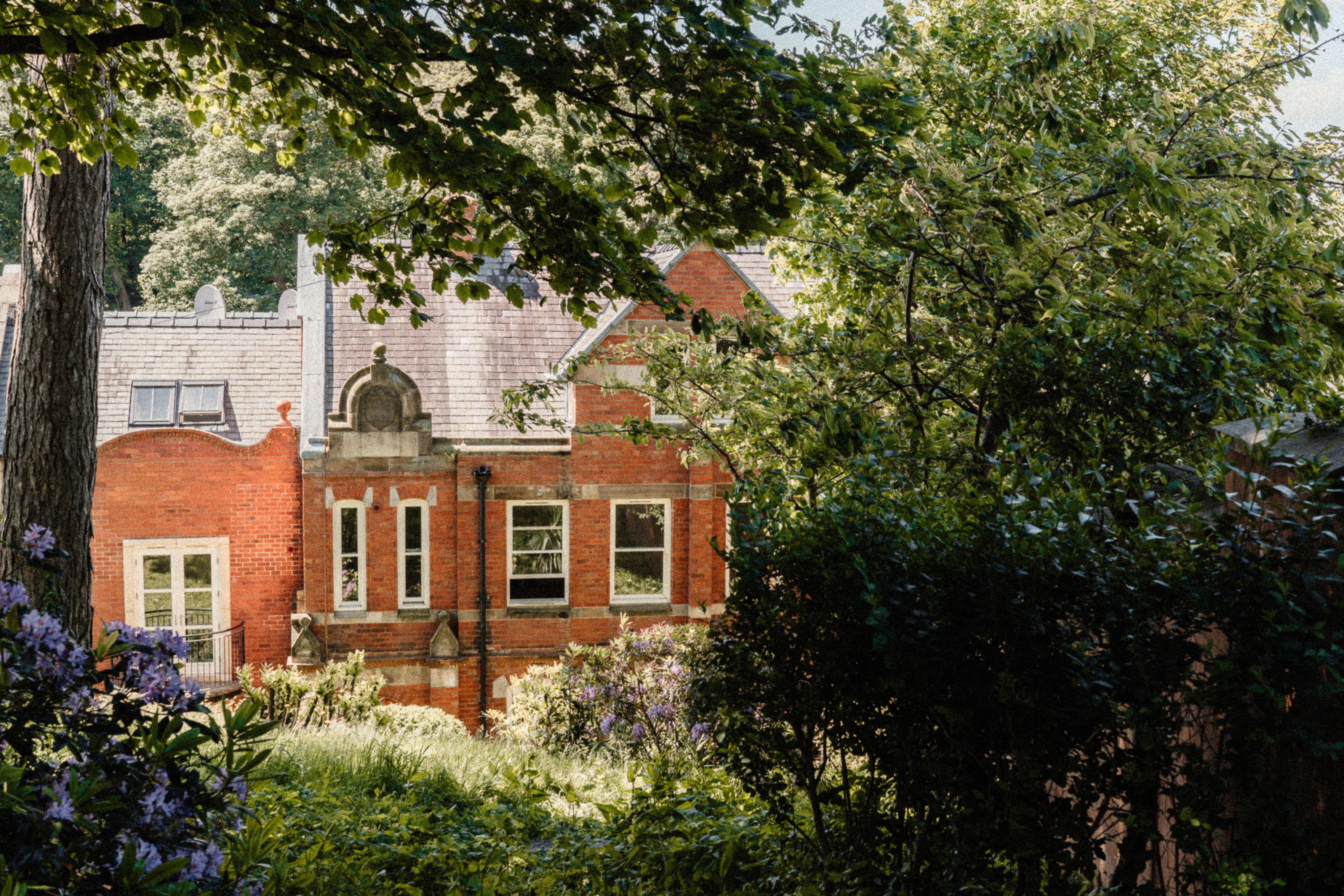 Saltmoore hotel review: The place to stay that's woodland retreat, seaside hotel and spa sanctuary all in one
Saltmoore hotel review: The place to stay that's woodland retreat, seaside hotel and spa sanctuary all in oneSaltmoore, on the North Yorkshire coast, has barely been open a year but is already earning recognition as one of the finest places to stay in Yorkshire. Toby Keel checked in.
-
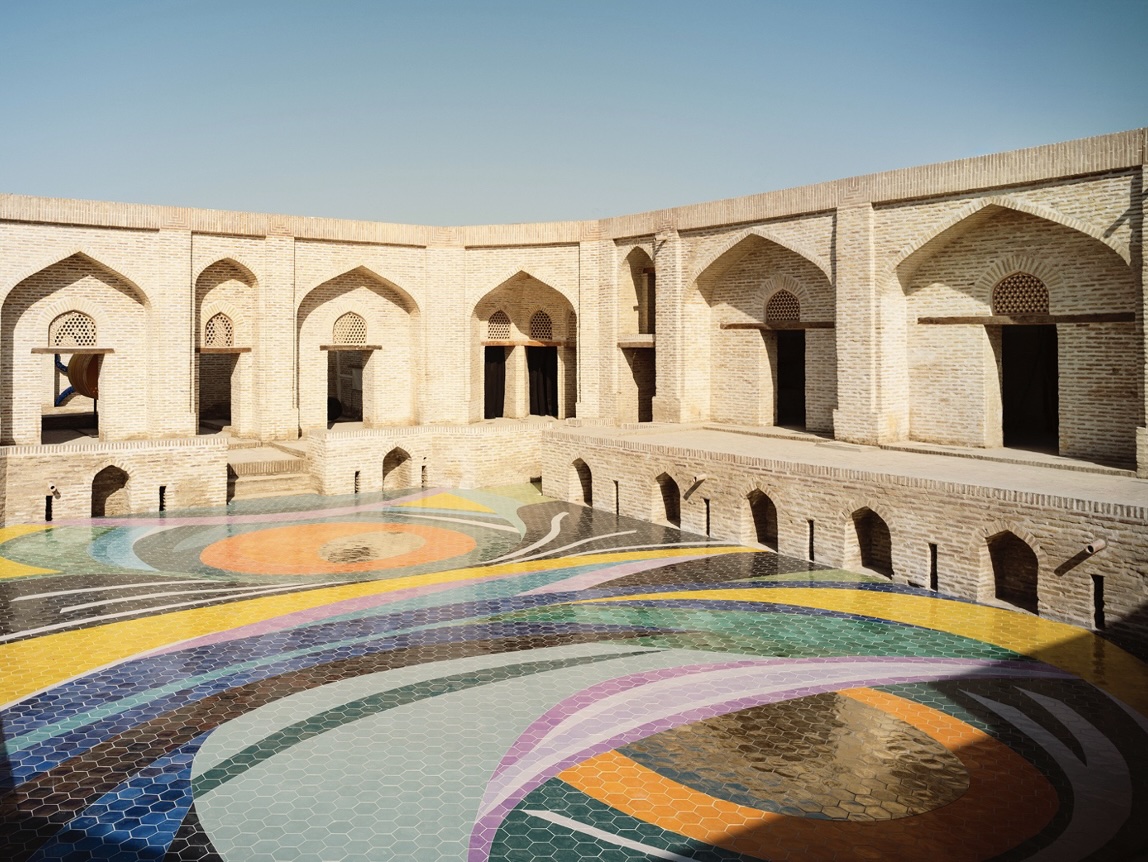 Uzbekistan's inaugural Bukhara Biennial turned traditional ways of displaying art on its head and reignited the traditions of the storied Silk Road
Uzbekistan's inaugural Bukhara Biennial turned traditional ways of displaying art on its head and reignited the traditions of the storied Silk RoadEvery week, the news breaks of another art fair — but the Bukhara Biennial is the one to watch, says Skylar Pinchal Coysh.
-
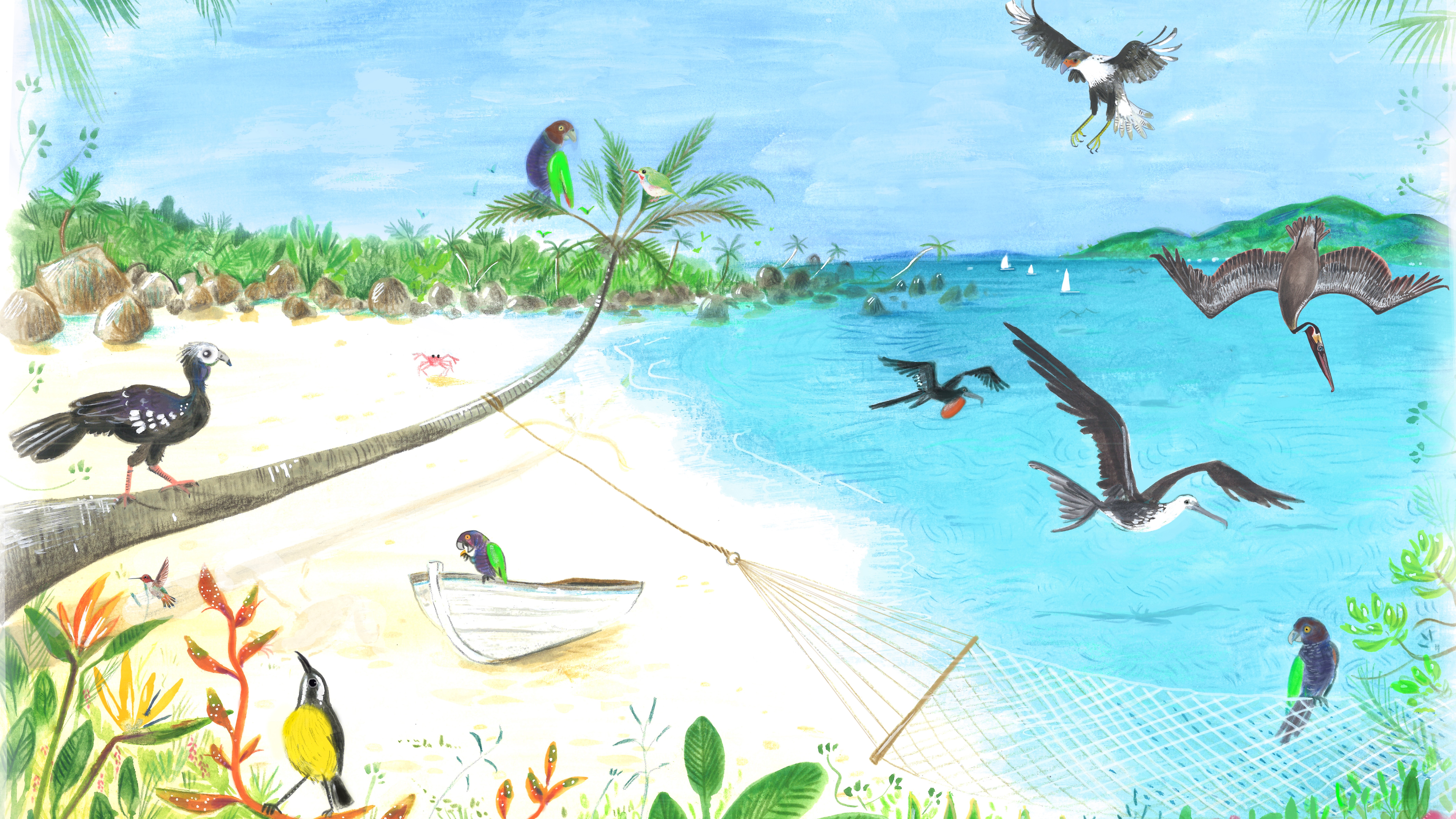 From the Caribbean with love: The other James Bond who wrote the definitive guide to tropical birds
From the Caribbean with love: The other James Bond who wrote the definitive guide to tropical birdsThe Caribbean plays host to a brilliant spectrum of colourful avians, says John Lewis-Stempel, as he revels in a birdwatcher’s paradise. Illustrations by Annabelle King.
